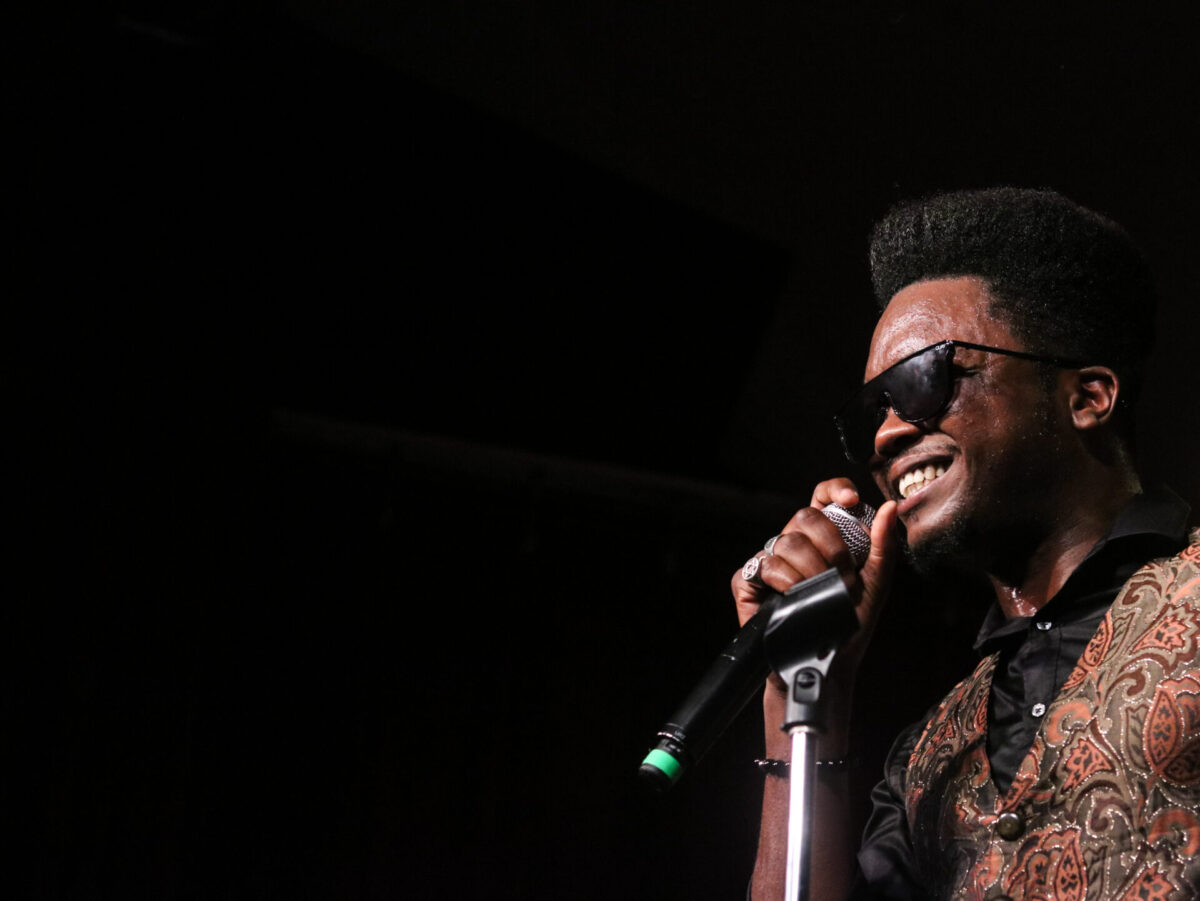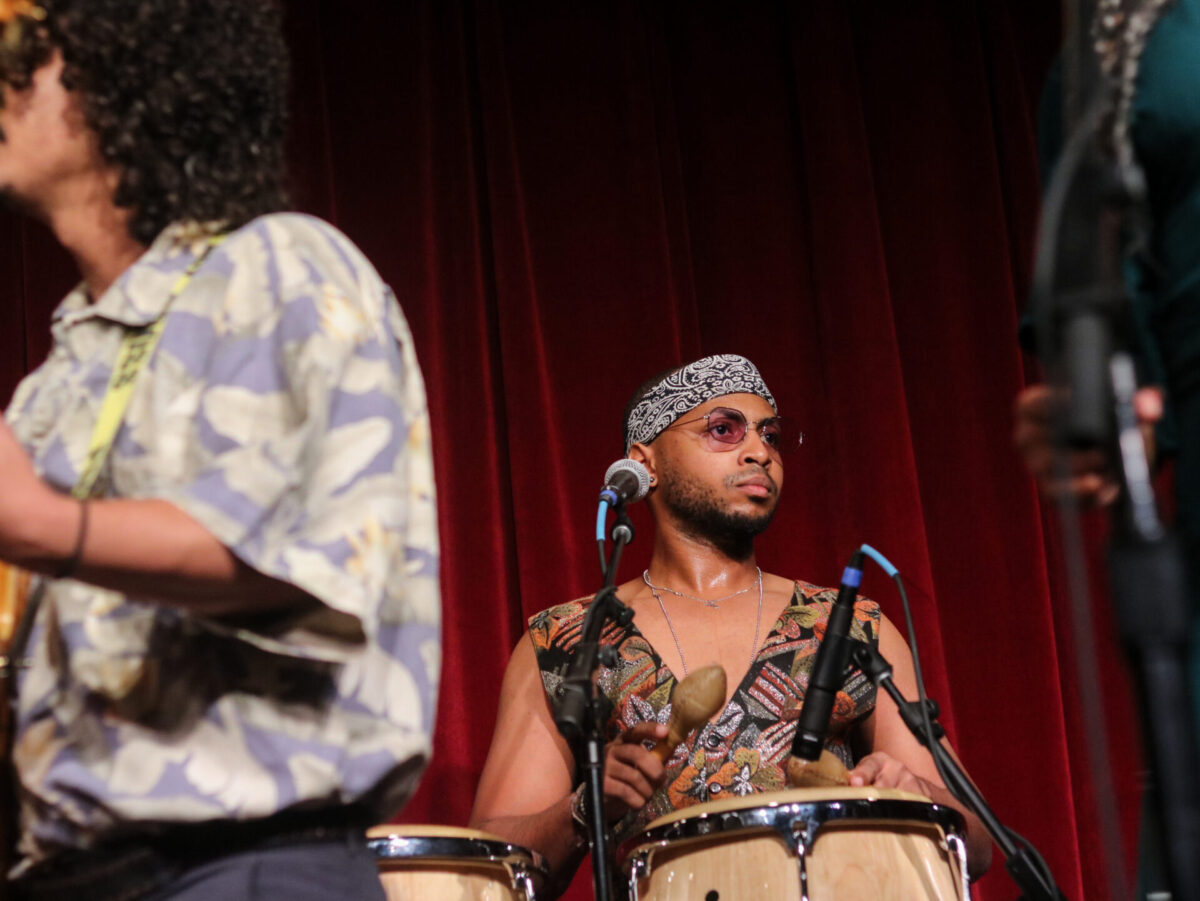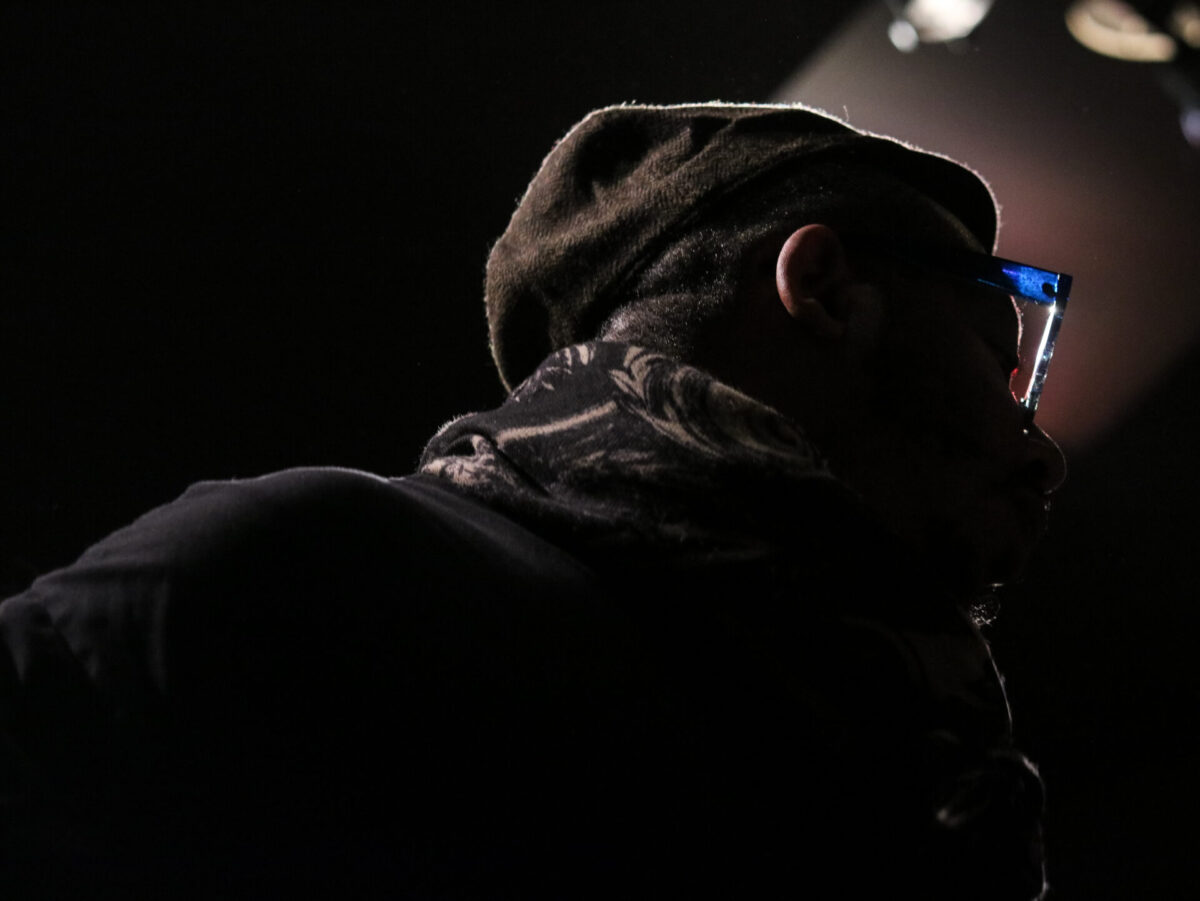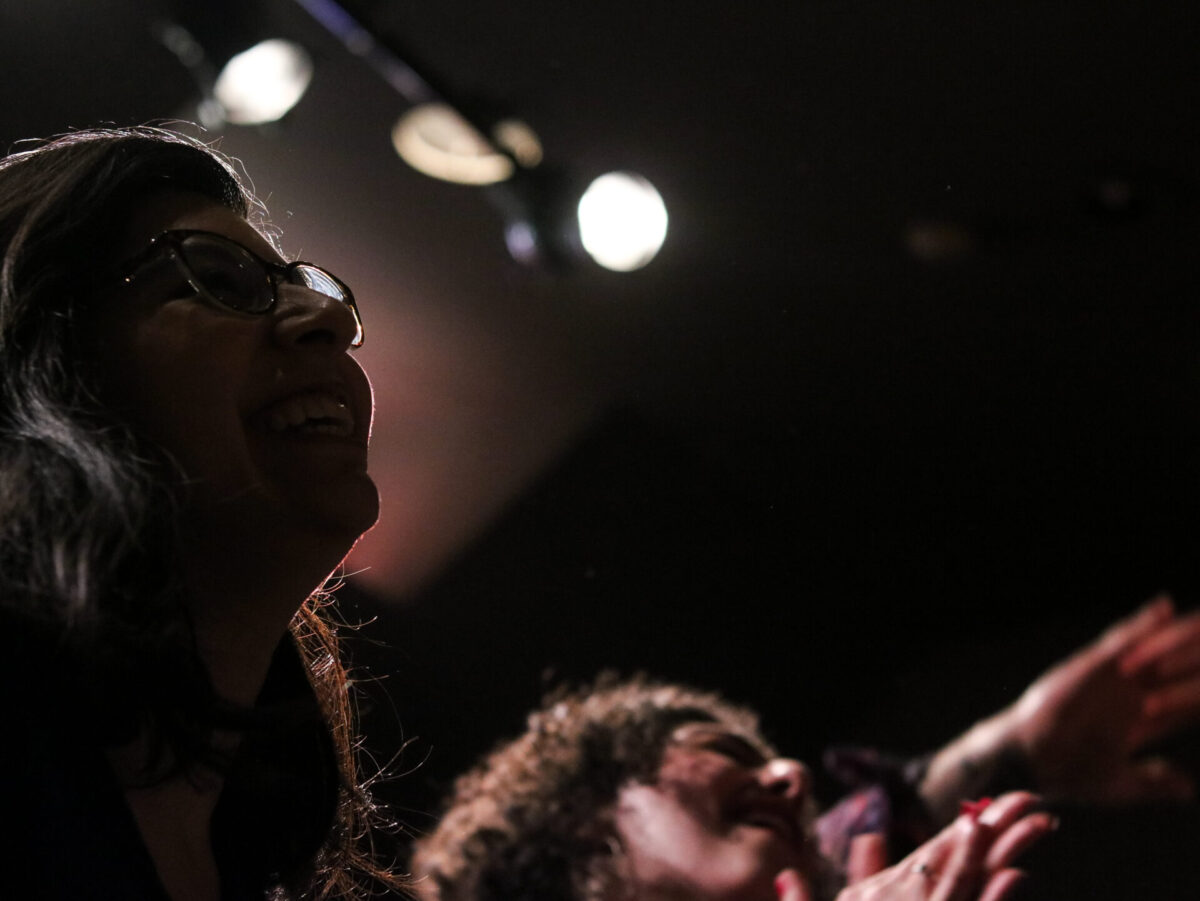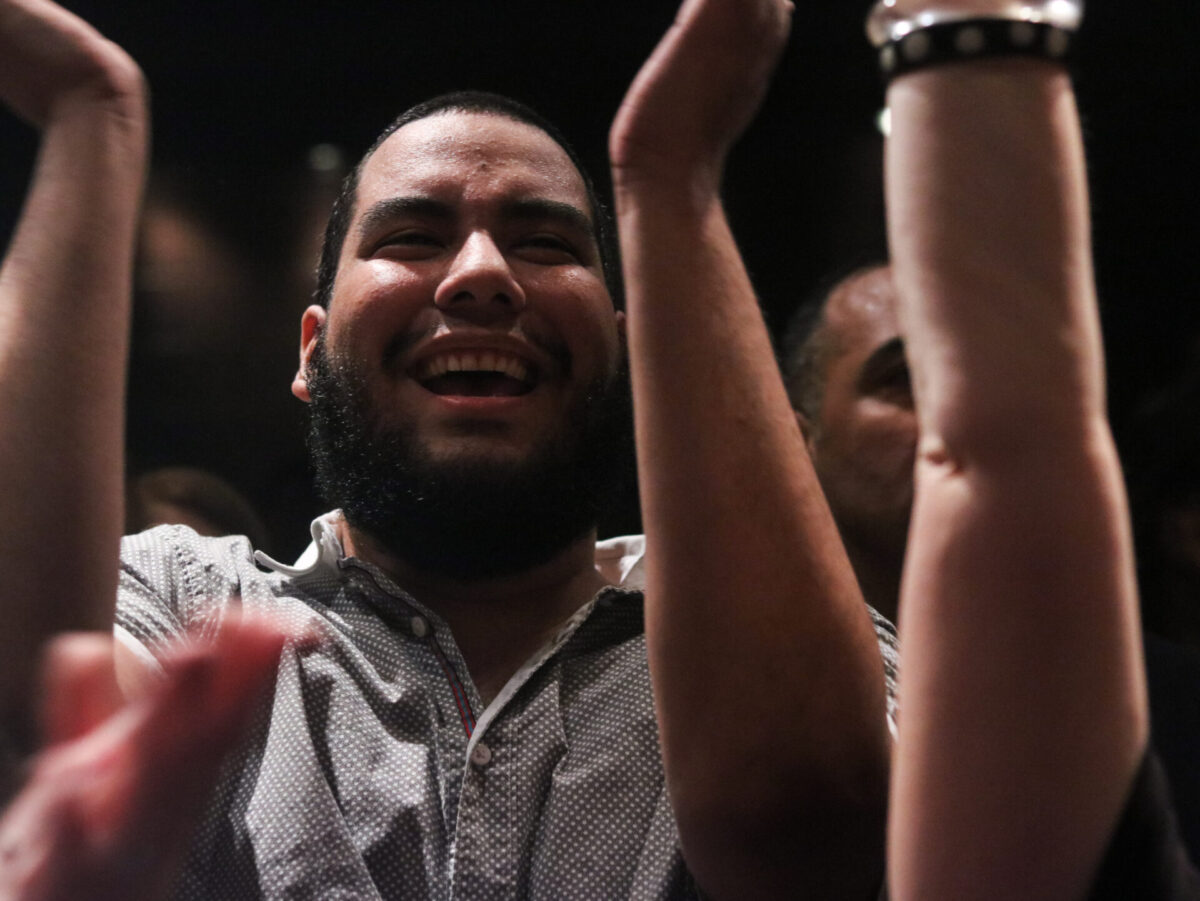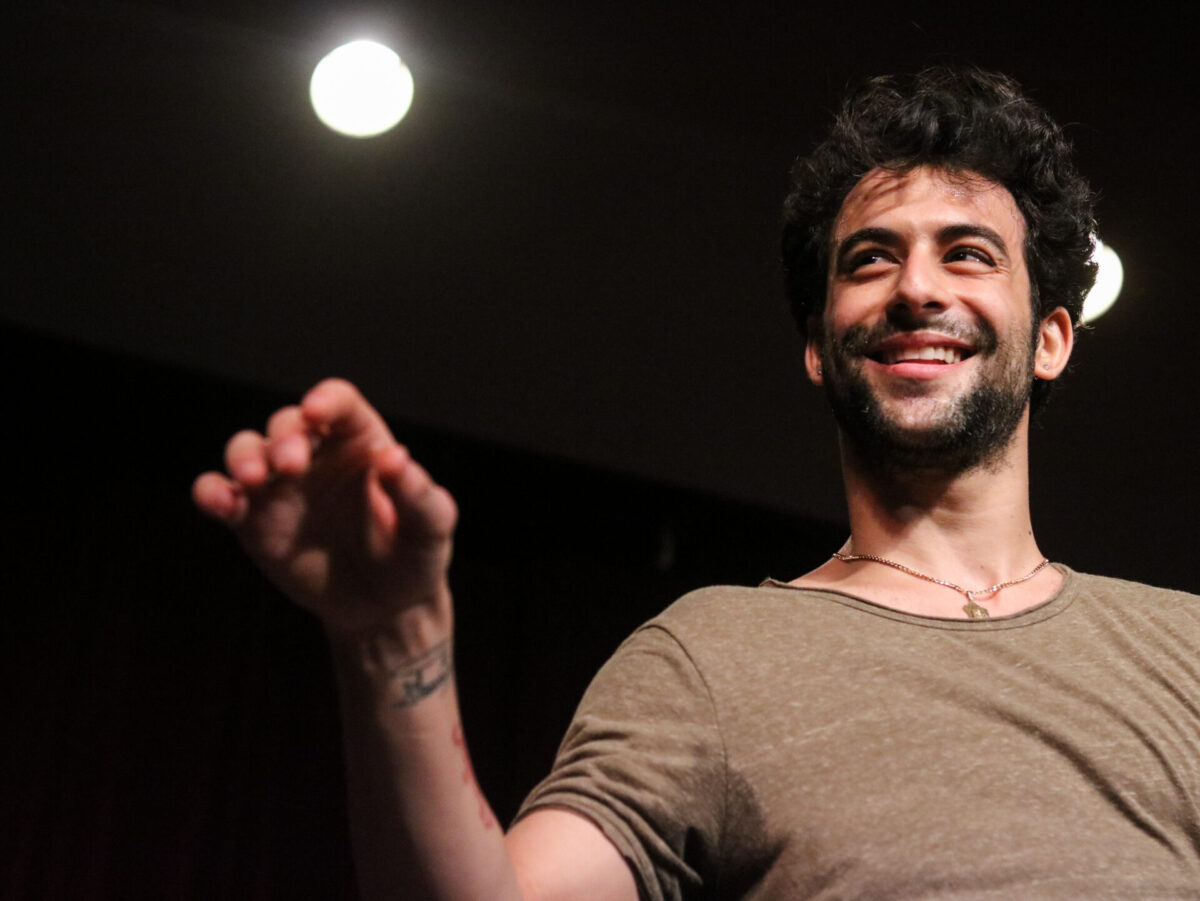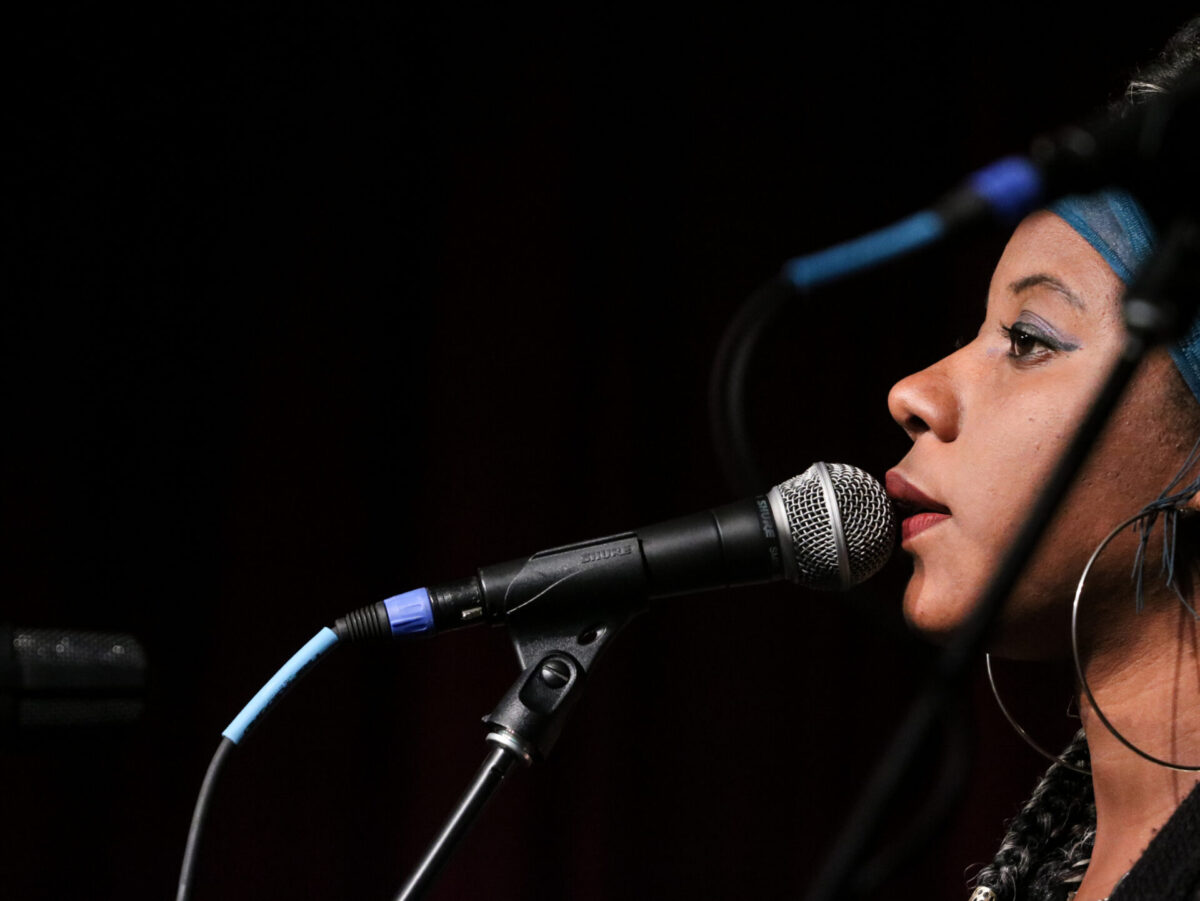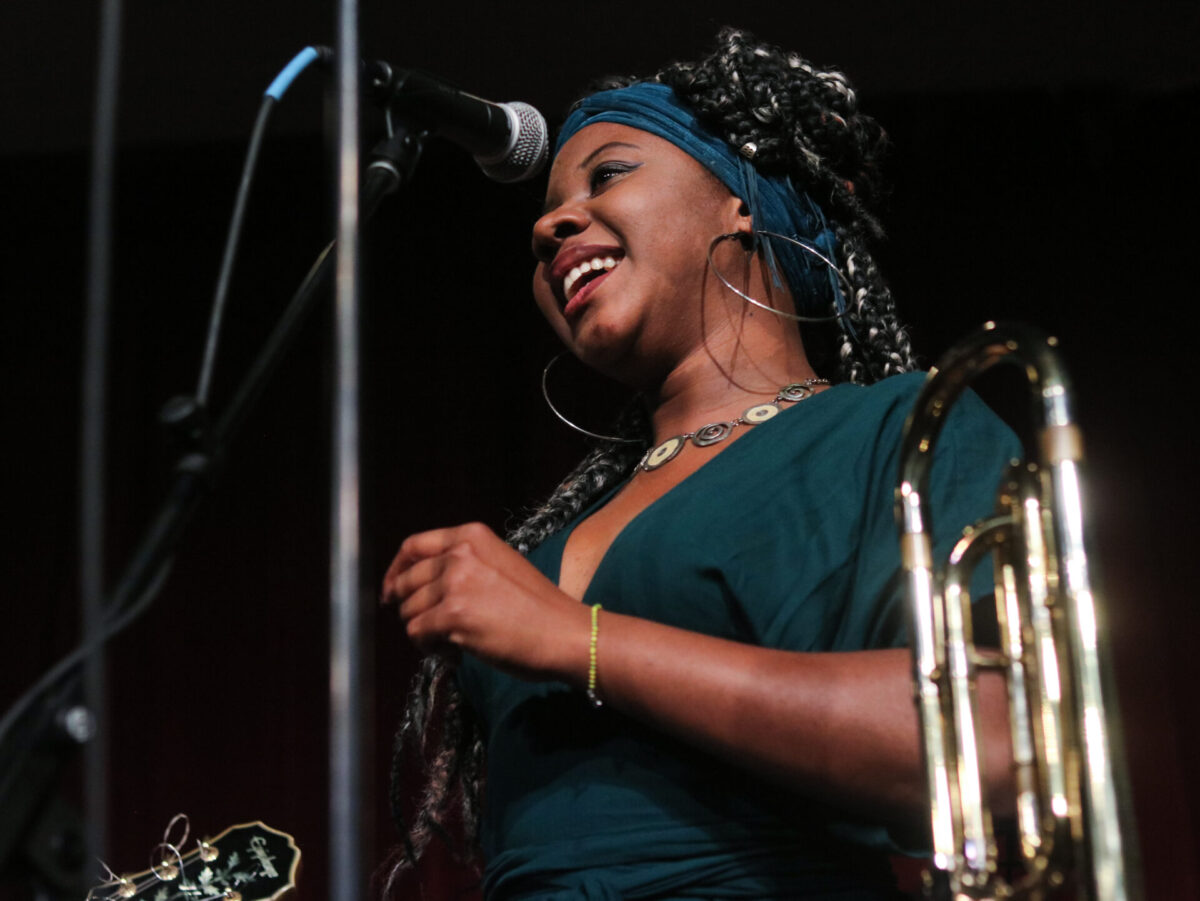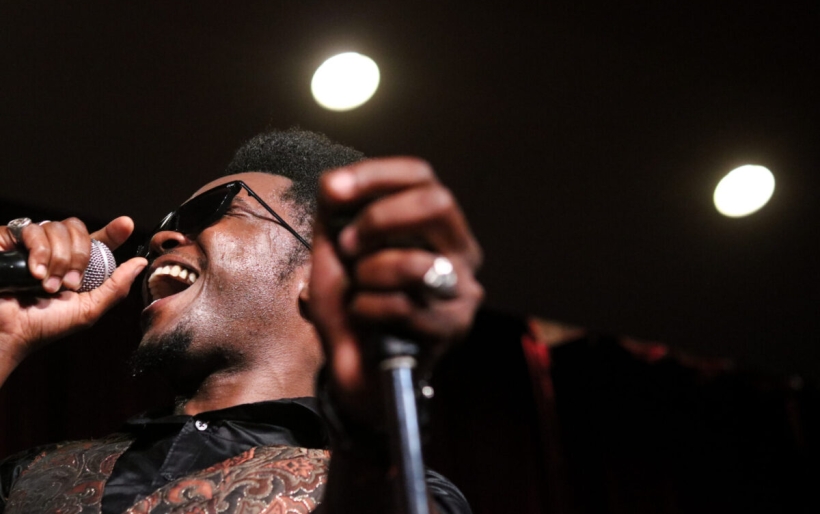
Erik Alejandro Rodríguez, a Cuban artist who goes by the stage name Cimafunk, performs at Moore College of Art on March 29 | photo by Angela Gervasi for WXPN | angelagervasi.squarespace.com
Cuban funk artist Cimafunk stopped in Philadelphia during his first U.S. tour. Here’s why that’s important
Erik Iglesias Rodríguez had hardly finished performing when his audience began chanting in Spanish— ¡otra, otra! — demanding an encore.
Rodríguez, better known as Cimafunk, glanced at his band members. The small crowd had already abandoned its seats to dance in front of the tiny stage of Graham Auditorium, a room tucked inside Moore College.
The band launched into one last song, “Alabao.” Like Cimafunk, the word comes from Cuba, where it’s used as a slang expression to convey exasperation or surprise.
And in a sense, Cimafunk’s own story is… surprising. At one point, he was studying medicine in his Pinar del Rio, a province on the west side of the island. Now, his music is blasting in Havana house parties. He’s landed on Billboard’s “Latin artists to watch” list for 2019 and has graced the stage at South by Southwest.

Erik Alejandro Rodríguez, a Cuban artist who goes by the stage name Cimafunk, performs at Moore College of Art on March 29 | photo by Angela Gervasi for WXPN | angelagervasi.squarespace.com
Long story short, the 29-year-old artist gave up medicine to pursue music — not just any music, but a splashy, Afro-Cuban funk that fuses hints of disco and motown with Latin beats. The songs on his 2017 album, Terapia (“Therapy” in English), are punctuated with everything from trombone, bass lines, and the crackle of a güiro — a gourd-shaped percussion instrument covered in ridges.
Even his stage name is a testament to Cuba’s complex history: “cima” comes from “cimarrón” — African slaves in Latin America who escaped brutal servitude to form their own free communities. The scraping noise of the güiro is more than a rhythm. It’s a testament to the Yoruban roots that fuel Cuba’s widespread musical genres: salsa, trova, rumba.
When asked to categorize his music, Cimafunk avoids cramming it into one genre.
He’s far more focused on dancing.
As Cimafunk plunged into hits like “Me Voy,” a cluster of people — like Elizabeth Estrada — hopped onstage with him. For Estrada, seeing Cimafunk live wasn’t just about the dancing: it was a way to bridge the gap between the U.S. and Cuba.

Elizabetha Estrada, a Philly resident with Cuban heritage, applauds while watching Cimafunk perform. | photo by Angela Gervasi for WXPN | angelagervasi.squarespace.com
Estrada, who’s Cuban-American, visited the island for the first time in January. And as she traveled through the country where family members once lived — a country separated from the U.S. by an ongoing embargo — she heard Cimafunk.
“He was blasting everywhere when I was in Cuba,” Estrada remembered.
So she rushed to buy a ticket when Cimafunk announced that he’d be stopping in Philly.
Over the past few years, U.S.-Cuban relations have fluctuated: thawing a bit with the Obama administration before tensing up again. But artists from both countries continue exchanging music — whether that happens through a Rolling Stones concert in Havana’s sports complex or Cimafunk’s first tour in the United States.
- Erik Alejandro Rodríguez, a Cuban artist who goes by the stage name Cimafunk, performs at Moore College of Art on March 29 | photo by Angela Gervasi for WXPN | angelagervasi.squarespace.com
- Erik Alejandro Rodríguez, a Cuban artist who goes by the stage name Cimafunk, performs at Moore College of Art on March 29 | photo by Angela Gervasi for WXPN | angelagervasi.squarespace.com
- Erik Alejandro Rodríguez, a Cuban artist who goes by the stage name Cimafunk, performs at Moore College of Art on March 29 | photo by Angela Gervasi for WXPN | angelagervasi.squarespace.com
- Erik Alejandro Rodríguez, a Cuban artist who goes by the stage name Cimafunk, performs at Moore College of Art on March 29 | photo by Angela Gervasi for WXPN | angelagervasi.squarespace.com
- Erik Alejandro Rodríguez, a Cuban artist who goes by the stage name Cimafunk, performs at Moore College of Art on March 29 | photo by Angela Gervasi for WXPN | angelagervasi.squarespace.com
- photo by Angela Gervasi for WXPN | angelagervasi.squarespace.com
- Elizabetha Estrada, a Philly resident with Cuban heritage, applauds while watching Cimafunk perform. | photo by Angela Gervasi for WXPN | angelagervasi.squarespace.com
- Fans react to a live performance by Cimafunk, an Afro-Cuban funk artist. | photo by Angela Gervasi for WXPN | angelagervasi.squarespace.com
- Fans react to a live performance by Cimafunk, an Afro-Cuban funk artist. | photo by Angela Gervasi for WXPN | angelagervasi.squarespace.com
- Fans react to a live performance by Cimafunk, an Afro-Cuban funk artist. | photo by Angela Gervasi for WXPN | angelagervasi.squarespace.com
- Fans react to a live performance by Cimafunk, an Afro-Cuban funk artist. | photo by Angela Gervasi for WXPN | angelagervasi.squarespace.com
- Fans react to a live performance by Cimafunk, an Afro-Cuban funk artist. | photo by Angela Gervasi for WXPN | angelagervasi.squarespace.com
- Fans react to a live performance by Cimafunk, an Afro-Cuban funk artist. | photo by Angela Gervasi for WXPN | angelagervasi.squarespace.com
- photo by Angela Gervasi for WXPN | angelagervasi.squarespace.com
- Trombonist and backup vocalist Ilarivis García performs with Cimafunk. | photo by Angela Gervasi for WXPN | angelagervasi.squarespace.com
- Trombonist and backup vocalist Ilarivis García performs with Cimafunk. | photo by Angela Gervasi for WXPN | angelagervasi.squarespace.com
- Trombonist and backup vocalist Ilarivis García performs with Cimafunk. | photo by Angela Gervasi for WXPN | angelagervasi.squarespace.com
- Drummer Raul Zapata performs with Cimafunk. | photo by Angela Gervasi for WXPN | angelagervasi.squarespace.com

